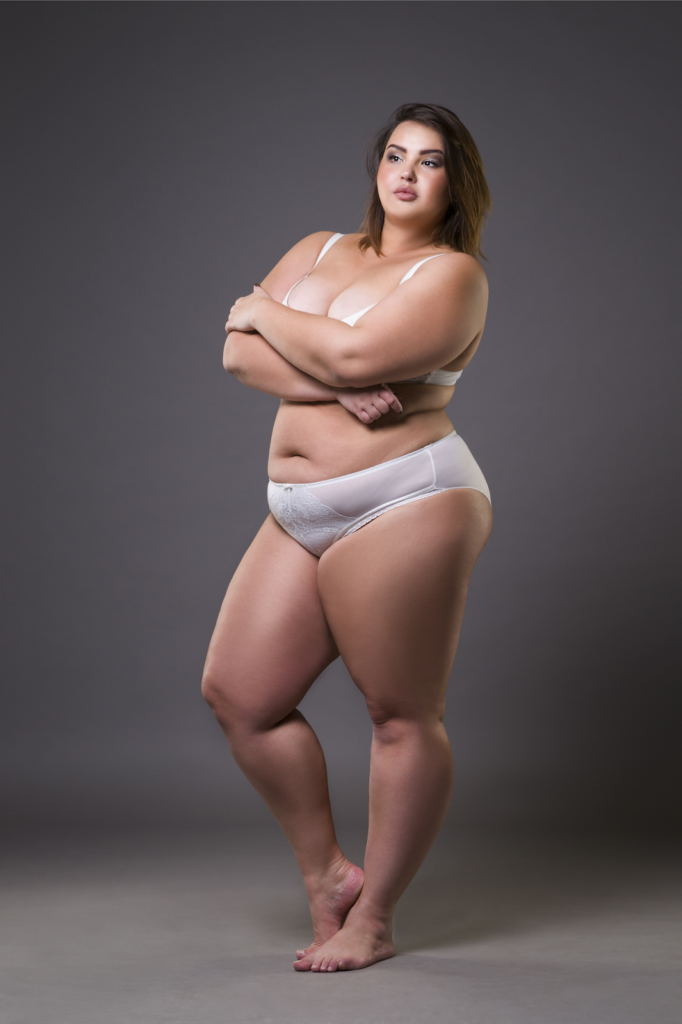An estimated 17-million women in the U.S. and nearly 370 million women across the globe suffer from a condition known as Lipedema. What is regularly associated with rapid and uncontrollable weight gain in its initial stages can quickly spiral out of control if left undiagnosed.
Lipedema is a disease that leads to the excessive buildup of fat cells, primarily in the arms and legs. Going far beyond the appearance of extra pounds, those who suffer from Lipedema often have large pockets of fat on their limbs that appear disproportionate in comparison to the rest of the body.


Lipedema is often misdiagnosed and dismissed by medical professionals as simple obesity, leaving affected women to deal with an endless cycle of disappointment, frustration, and pain. Lipedema does not respond to a diet and exercise routine, yo-yo dieting, or juice cleanses. Ultimately, effective treatment will require cosmetic intervention in order to alleviate the appearance and pain of symptoms. Liposuction performed on the affected limbs is generally the most effective form of treatment. Removing fat deposits that are diseased not only helps reduce swelling of the limbs but alleviates the pain that holds patients back from everyday activities.
One of the top recommended treatments for dealing with lipedema is lymph sparing liposuction. This surgical treatment is able to provide a variety of benefits and relieve the symptoms you are experiencing from lipedema. Dealing with lipedema can be difficult, especially if you are just now starting to take control of it.
Women suffering from Lipedema often report the disease in association with painful symptoms that trigger difficulties dealing with everyday life activities. Excessive swelling often comes with pain, numbness, and bruising. In its advanced stages, Lipedema can impact mobility and provoke vascular and lymphatic swelling which can lead to further medical complications.
Why Do We Call It “Lymph-Sparing?”
Lipedema reduction surgery is different from cosmetic liposuction. Studies have shown that women with Lipedema have impaired lymphatic function. Lymphatic fluid promotes the collection of fat cells, which can cause the obstruction of lymphatic capillaries (branch-like blood vessels). Extra care must be taken to avoid injuring the lymphatic system and making an already stressed system worse. Using blunt cannulas generous and special surgical techniques, studies have shown that lymphatic function can actually improve after this type of liposuction in women with Lipedema. The goal of lipedema reduction surgery is to remove the fibrous tissue and maximally reduce the lipedema tissue. It is a debulking surgery, not a cosmetic surgery.
There are two specialized liposuction techniques that have been shown in studies to benefit individuals with lipedema: water-assisted and tumescent liposuction. In addition to the surgical equipment used, it is important to choose a surgeon with experience and one that is cautious when performing lipedema surgery. These factors can have an important influence on protecting lymphatic flow and function.
1 – No General Anesthesia
One of the most beneficial aspects of lymph sparing liposuction is that the treatment does not rely on general anesthesia. While general anesthesia is used for a variety of treatments, it can cause complications for individuals with lipedema. In fact, it can cause complications in as high as 0.3% of liposuction treatments when used. Instead, lymph sparing liposuction uses tumescent anesthesia to avoid these unwanted complications. In fact, general anesthesia can cause serious complications even death in up to 0.3% of liposuction treatments when used. Patients are conscious for the duration of treatment, while the tumescent liquid acts as a local anesthetic to the treatment area. Patients take pain kills ahead of time to help with discomfort, and through the process feel little pain, and if anything, pressure in the area being treated.
2 – Reduces Fat Tissue
Perhaps the most noticeable benefit to lymph sparing liposuction is how it is able to reduce the amount of subcutaneous fat tissue in the body. Lipedema reduction surgery not only significantly reduces fat tissue, but also removes fibrous tissue, making the limbs lighter, smaller, less tender, and smoother. It is critical to follow your physician’s guidelines to reduce any swelling and inflammation before the treatment. This is done by wearing compression garments and wraps along with receiving manual lymph drainage for several weeks following lipedema surgery and beyond. Patients wear medical-grade compression clothing for at least 8 weeks, and manual lymph drainage and massage are typically recommended as an ongoing and regular treatment.
Your tissue will be decongested, allowing your liposuction treatment to be as successful as possible. Some slight swelling and bruising may return immediately following the procedure, but this is expected and should subside over time. Some patients also report numbness as their nerves in the treated areas respond to treatment. Numbness may last for several months and up to one year, but when compared with the reduction in fat tissue, patients still see this as a huge improvement. Compression is critical to be maintained after the lipedema surgery as well, as the lymphatics are reestablished. The lymphatic function is often improved.


3 – Reduces Pain Associated with Lipedema
By reducing the amount of subcutaneous fat tissue, you can reduce any pain that is associated with lipedema. Lipedema reduction surgery, which is sometimes referred to as Lymph sparing liposuction, will be able to help you increase mobility without having the pain you have been feeling with lipedema since it started. This is huge for women with lipedema, especially because the pain and bruising is the leading symptom of seeking treatment. Women report a significant improvement in their ability to move around more freely, exercise more regularly and enjoy day-to-day activities that were previously off-limits. Bumping into a chair or a corner no longer causes large bruises, playing with the family dog doesn’t cause pain when they jump, and everyday activities are no longer considered out of reach.
4 – No Additional Risks Included
Lipedema reduction surgery also makes sure to avoid any additional risks for the treatment. This type of liposuction procedure limits the amount of fat tissue that will be removed at once, and a follow-up appointment is scheduled for the day following the procedure to ensure the treatment and recovery are going as planned. While that may not seem like a benefit at first, it will actually make sure your body does not take any additional trauma than what is needed. The general amount of fat tissue that can be safely removed is around 5.0 liters. Smaller cannulas are also used to also keep down the risk of trauma to the body and an already compromised lymphatic system.


5 – Quality of Life
While the recovery can get painful, especially in more heavily used areas such as the arms and calves, patients will report that the payoff is well worth it. Lipedema fat more often accumulates around the lower body, including the thighs and buttocks. Women will often see the majority of their Lipedema fat in these areas. However, they can also commonly find Lipedema fat accumulation around the inner knee and backside of their leg. After the removal of lipedema tissue in these areas, patients are not only more mobile and can get around more easily, but they experience far less pain in their daily lives.
This procedure allows for a more active and healthy lifestyle, which many patients have experienced in years (and in some instances, it’s been decades). If paired with proper compression therapy, a healthy diet, tons of water for hydration, and responsible maintenance, women with lipedema are afforded a much higher quality of life and more enjoyable day-to-day. The reduction of irregular and heavy fat can improve joint function, making everyday tasks such as walking, climbing stairs, tying shoes, or even getting up from a chair much easier than before. Normal tasks that many take for granted are daunting and painful for women with lipedema, and lymph sparing liposuction can help reset the clock by several years to help provide a higher quality of life for those who have missed it for years.
Recovery from Lipedema Surgery
While lymph sparing liposuction for lipedema is generally safe in healthy individuals, risks such as infection, bleeding, and trauma to the area may occur. Post-operative swelling in the limbs after surgery, which occurs with any liposuction procedure, is more prolonged in individuals with lipedema. The swelling typically worsens for a few months before it gets better, and the full benefit may not be realized for six months to a year. However, overall, most patients with lipedema experience significant improvement of many or all of their symptoms, with varying individual results. It’s not uncommon for Dr. Wright and his team to complete the procedure, and their patient notices a change before they leave the office, especially when large amounts of fat tissue are removed.
Although some people who have lipedema in one specific area may need only one procedure, most people undergo multiple lymph sparing liposuction procedures to address all the different areas affected by lipedema. The multiple liposuction procedures need to be staged, or separated, to be done safely. The timing of the procedures depends on multiple factors, including the clinical stage of lipedema in the patient, the amount of fat being removed, the patient’s health and mobility, and other logistical factors. Generally, each procedure should be spaced out by at least three months to allow for proper recovery. After the lipedema surgery, patients go home the same day but should be sent home already in their compression garments. The first afternoon after surgery should be spent resting, and it’s likely patients are extremely drowsy from the procedure and medications. The following day post-op check-in should be completed before returning home. Patients will be sore and will continue to experience drainage of tumescent fluids. Padding around the incision points is required for several weeks, and compression garments are worn around the lock for the first several weeks, then worn during the daytime hours only, before eventually tapering off after 12 weeks.
Schedule Your Lymph Sparing Liposuction Today
As you can see, there are plenty of exciting benefits to lymph-sparing liposuction. This procedure can make it easier to live with unwanted symptoms such as difficulty with mobility, pain, and tenderness. Physicians such as Dr. Wright can provide you with the needed treatment that it takes to reduce your lipedema symptoms. Contact us today!




